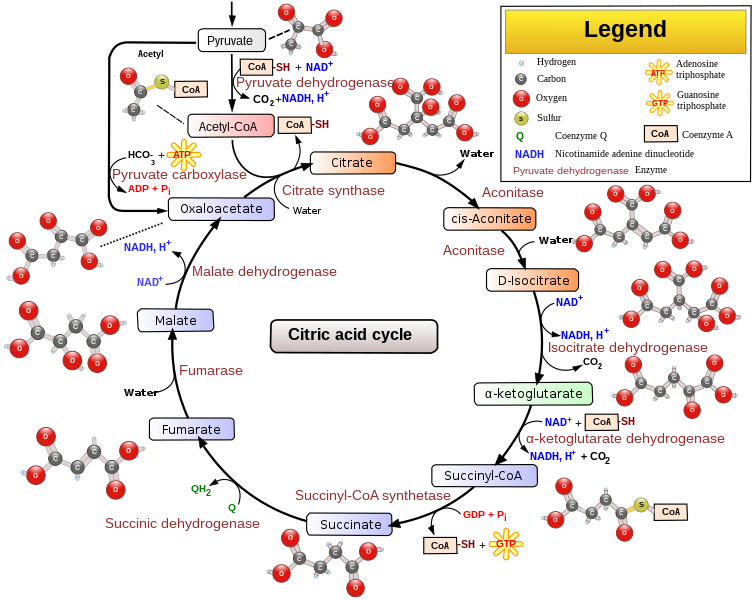Aconitase
Aconitase (aconitate hydratase) is a tricarboxylic acid cycle (TCA) enzyme that converts citrate to iso-citrate via cis-aconitate. It has an iron sulfur cluster that interacts directly with substrate and is prone to oxidation by superoxide. Inactivation of aconitase has been implicated in neurodegenerative diseases [1]. A mutation in ACO2 is associated with Infantile Cerebellar-Retinal Degeneration [2].
from [2]: "The active (4Fe-4S) cluster was shown to be extremely sensitive to superoxide-mediated inactivation10
and a decrease in AH activity was observed in several neurodegenerative
diseases associated with the development of oxidative stress, in
particular Friedreich ataxia [MIM 229300], Parkinson [MIM 168600], and Alzheimer disease [MIM 104300],11 as well as in mice lacking mitochondrial superoxide dismutase.12
The reduced AH activity in endomyocardial biopsies of individuals with
Friedreich ataxia was attributed not only to oxidative stress but also
to the importance of Frataxin in the Fe-S cluster assembly.13
The secondary inhibition of mAH in individuals with Friedreich ataxia
might thus underlie the clinical similarities with the individuals we
studied, in particular the progressive cerebellar atrophy and the optic
atrophy.14 "
References

Comments
Post a Comment